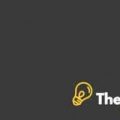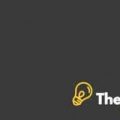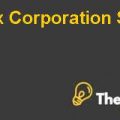INTRODUCTION:
Bed Bath & Beyond (BBBY) was established by Warren Eisenberg and Leonard Feinstein in the year 1971. In the year 1992, Bed Bath & Beyond offered Initial Public Offering to the general public on the NASDAQ. After IPO of BBBY, it was considered to be favorable company for its equity investors in terms of returns and one of the best performing companies in the retail industry.
Since establishing its first superstore in the year 1985, the company has enjoyed growth in terms of expanding its operations and these operations were expanded into 575 stores. By the end of the year 2003, BBBY also owned 24 Christmas Tree Shops and operated 30 Harmon Stores. The company had a strong position regarding the cash flow and all of the major acquisitions made by the BBBY was financed with the internally generated cash through operations.
In the year 2003, the executives of the company observed that company’s growing cash flow position is deteriorating the return for its equity investors and in order to secure its equity investors returns, the company was considering to revise its Capital Structure.
PROBLEM STATEMENT:
The key problem faced by the Bed Bath & Beyond was the growing position of its cash flows that was weakening its investor’s returns. The challenge was to revise the company’s capital structure so that all the future investment should be made using the debt financing.
ANALYSIS:
The analysis contains the detailed analysis of the problems faced by the BBBY due to the reason that, its cash position was affecting the equity investor's investment. In addition to analyze the case further various factors also have been analyzed for revising the capital structure of the company.
The analysis has been made on the following factors such as:
Approval of Debt Issuance
Reasons for taking Decisions
Critical Analysis of Decisions
Approval of Debt Issuance
Over the past years tremendous success has been enjoyed by the Bed Bath & Beyond that in result helps in generation of enough cash from their operations that further helps the company to expand its operations. In addition to the strong financial position, company’s balance sheet is showing the excess cash. This excess cash would raise the concern about the company’s performance and company’s executive performance for efficient utilization of excess cash. This also raises the concern that management of the company is not effectively managing company’s capital structure for the purpose of generating positive returns.
In addition to this excess cash position, the return on equity investment and earning per share also declines that would result in depressing the inventors and investors, and would lose their confidence for investing into the BBBY and it might lead towards divesting of the investor's investment from BBBY.
In the past company was showing positive returns for their investors and from those returns and positive cash generations the company had successfully acquired most of the companies, these successful acquisitions increases BBBY’s net earnings such as $15,960 in 1993 and it grows further and the net earnings reports as $399,470 in the fiscal year 2004. Thus BBBY should consider adopting a policy through which it would lead towards, increasing the value of the shareholders that would lead further into investor’s confidence to invest into BBBY.
The balance sheet of the company shows that BBBY has an excess cash that is around $400 million and also that company has the opportunity to increase its debt that is around $636.3 million that could be for repurchasing of the existing shares. If BBBY would go for adopting this policy than it would lead towards improving the equity holders return and increases the earnings per share. It would further lead towards boosting the moral of the investors for not divesting its investing from BBBY instead investors would retain its current holding in the company.
Furthermore, the company was moving towards raising its debt to capital either by 40 percent or 80 percent. If a company would go for raising its debt capacity by 40% than the debt would be around $636.3 million, but if the company would go for raising its debt capacity by 80% than the debt would be around $1.27 billion. This debt capacity could be further used for the repurchasing of the existing shares.
If the company issues debt than the advantage of issuing debt is that it would reduce the deductible portion of tax from income, but alternatively this also has the impact on the company’s interest coverage ratio as it would be reduced. If the company would.....................
This is just a sample partial case solution. Please place the order on the website to order your own originally done case solution.
This case is exactly what investors include information on the development strategy of Bath Bed & Beyond (BBBY) in the share price, especially given the changing competitive environment in the industry dishes and a recent article Barron pointing to a number of negative indicators for BBBY. Red flags, the article said, include a request for BBBY extended payment terms with its suppliers, inventory of buildings, insider stock sales, and less interest in the company's warehouse. In the first days after the article Barron, BBBY stock price falls by more than 10%. "Hide
by Amy P. Hutton, James Weber Source: Harvard Business School 32 pages. Publication Date: April 11, 1996. Prod. #: 196123-PDF-ENG














